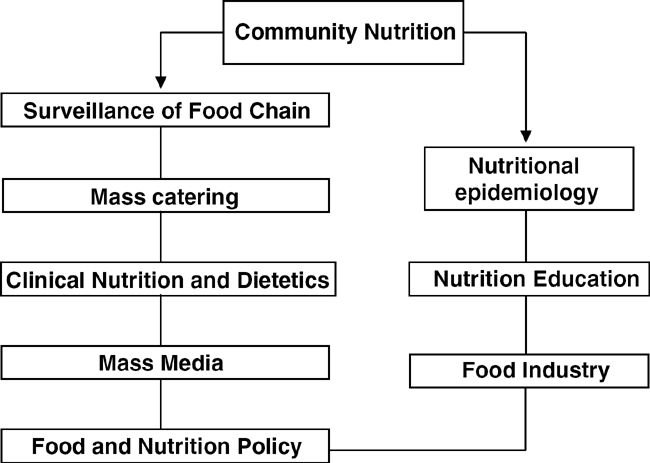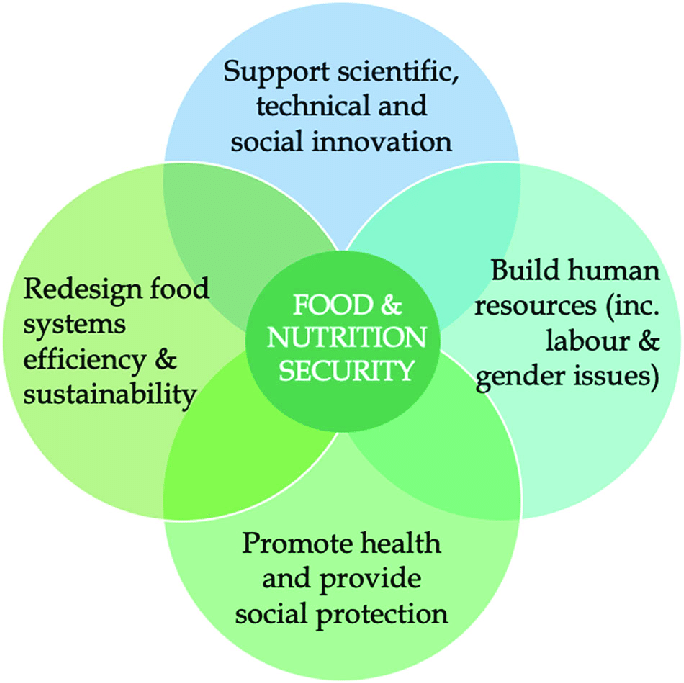Healthy eating is not just about personal preferences; it is also strongly influenced by the settings in which we work, play, and reside. Community nutrition acknowledges this interaction and focuses on the health and welfare of populations within a particular area. It’s a comprehensive approach that takes into account social, economic, and environmental factors that affect dietary habits and health outcomes in addition to access to nutrient-dense food. This essay delves into the notion of community nutrition and examines its practical applications, promoting constructive transformation at the local level.
Comprehending Community Nutrition
The traditional paradigm of nutrition instruction and counselling given in clinical settings is not the only approach to community nutrition. Rather, it recognizes the more comprehensive factors that influence health, such as societal conventions, food accessibility, social standing, and physical surroundings. These factors influence people’s capacity to make health-conscious decisions, which in turn affects the state of community health.
Community nutrition’s primary goal is to improve health equity by addressing differences in people’s access to wholesome food and medical treatment. It promotes laws and plans that establish conducive conditions for healthy living, like farmers’ markets, community gardens, and locally-specific nutrition education programs.

In Action: Community Nutrition
The flexibility of Nutrition in the community to fit a variety of environments and demographics is among its most alluring features. Disenfranchised communities, who live in rural villages, or are in urban neighbourhoods could benefit from programs based on Nutrition in the community concepts. Let’s examine some real-world instances of community nutrition:
Urban Food Deserts
The predominance of food deserts—areas with few or no grocery stores offering healthy options—means that residents in many urban areas have limited access to fresh vegetables and other nutritious items. To fight this issue, community nutrition programs set up mobile markets, co-ops controlled by the community, and collaborations with nearby farmers to supply fresh vegetables to underprivileged neighbourhoods.
School-Based Nutrition Programs
Schools have a significant impact on how kids eat and how healthy they are overall. Enhancing cafeteria menus, putting nutrition education curricula into place, and setting up school gardens where kids may learn how to grow their food are the main goals of Nutrition in community initiatives in schools. These programs not only encourage better eating practices but also give kids the ability to make knowledgeable diet decisions.
Coalitions for Community Health
To effectively address complex health concerns, collaboration between community people, healthcare providers, policymakers, and other stakeholders is necessary. Community health coalitions combine a range of resources and viewpoints to create localized plans for enhancing physical activity, nutrition, and general well-being. These coalitions encourage long-lasting transformation in communities by utilizing group knowledge and forming alliances.
Workshops on Nutrition Education
The cornerstone of community nutrition is equipping people with the information and abilities they need to make healthy decisions. Workshops on nutrition education are held in community centres, churches, and other gathering places. They offer helpful advice on meal planning, frugal food shopping, and preparing healthy meals. These workshops provide participants with the tools to take charge of their health by making nutrition knowledge understandable and relevant to their culture.
Policy Promotion
Advocacy at the policy level is necessary to change the systemic issues that lead to malnutrition. Nutrition in the community advocates strive to impact policy at the local, state, and federal levels concerning school nutrition standards, agricultural subsidies, and food access. Advocates for policies that promote healthy eating environments and tackle socioeconomic determinants of health have a long-lasting effect on the health outcomes of the community.
Explore More Nutritional Biochemistry: Examining Food and Well-being
Possibilities and Difficulties
Initiatives promoting Nutrition in the community have a lot of potential to improve public health, but they are not without difficulties. Intervention effectiveness may be hampered by a lack of resources, inadequate infrastructure, and deeply ingrained socioeconomic inequality. Furthermore, the acceptance and uptake of nutrition programs may be influenced by cultural disparities and differing degrees of community involvement.
But these difficulties also offer chances for creativity and cooperation. Through the promotion of cross-sector partnerships, the utilization of technology for outreach and education, and the inclusion of community perspectives in decision-making procedures, stakeholders can surmount obstacles and propel enduring transformations.

In summary
The concept that maintaining one’s health is a group effort rather than just an individual one is embodied by community nutrition. Initiatives focused on Nutrition in the community have the potential to change communities and enhance the health of its citizens by addressing the underlying causes of malnutrition and creating circumstances that encourage healthy choices. We can build more egalitarian, healthier communities where everyone has the chance to prosper by working together, advocating from the bottom up, and taking grassroots initiatives.
FAQs
What is communal nutrition exactly?
The goal of the public health field of Nutrition in the community is to enhance the health and well-being of populations or groups of people within particular communities. It takes into account several variables that affect eating patterns and health consequences, including socioeconomic position, cultural influences, and accessibility to nutrient-dense food.
What distinguishes individual nutrition counselling from communal nutrition?
Nutrition in the community has a more comprehensive approach, whereas individual nutrition counselling usually concentrates on offering individuals tailored dietary recommendations and interventions. It attempts to address structural problems with nutrition in communities, like food deserts, food insecurity, and legislative lobbying for better surroundings.
What kinds of community nutrition initiatives exist?
A broad range of activities are included in Nutrition in the community programs to enhance nutrition and health in local communities. Programs for teaching children about nutrition in schools, farmers’ markets, community gardens, food assistance programs, nutrition workshops, and legislative advocacy initiatives to increase the availability and cost of food are a few examples.
What role does community involvement play in nutrition projects’ success?
Involving the community is essential to the sustainability and success of nutrition programs. Planning, carrying out, and evaluating programs with the active participation of the community allows initiatives to be customized to the unique requirements and preferences of the community. Participation in the community also increases one’s sense of empowerment and ownership, which increases participation and impact.
What part do legislators play in nutrition in the community?
Politicians have a big say in how communities’ food environments are developed and how well their members eat. They have the authority to pass laws about food assistance programs, nutrition education, food labelling, and food access. Among the top concerns in Nutrition in the community initiatives are advocating for laws that will help and providing funding to combat food insecurity and encourage healthier eating situations.










